“This post contains affiliate links, and I will be compensated if you make a purchase after clicking on my links.”
If you’re considering feeding your dog a raw diet but are still on the fence, these facts and tips might help make your decision a little easier. Many of us have heard countless horror stories of health issues ranging from diabetes, to periodontal disease, and even arthritis, that can be attributed to a commercial kibble or canned food diet for dogs. The truth is, just because the front of the package shows a big chunk of healthy meat, that’s usually a far cry from what’s inside the bag or can you’re feeding Fido.
The Dog Guide assembled this short list of simple facts and advice for starting your dog on a raw diet.
Fast Facts And Quick Tips For Feeding Your Dog A Raw Diet
One of the most frequent concerns I hear from individuals who are not familiar with feeding dogs a raw based diet (meaning a diet based mainly on raw meat and raw bones) is a worry of bacterial infection, such as Salmonella or E.Coli. Having done extensive research on the topic of raw feeding before I decided to switch my own dogs to this type of diet, I feel the need to debunk some of the paranoia that society has about dogs consuming raw meat – which is what they were designed to do!
Feeding raw is more time consuming. That is a fact. It’s messier than scooping kibble out of a bag. It requires more research and planning. However I feel it is the absolute best diet I can feed my dogs, thus I believe all the effort is worth it. My pups look wonderful and receive comments about their coat and condition every time we go for a walk.
Physically, canines are built to process meat – they’ve been doing so for thousands of years (long before commercial dog food companies existed!). The acids in their stomach are stronger than ours and their digestive tracts are short. This doesn’t allow enough time for bacteria, such as Salmonella, to multiply and flourish within your dog.
Safe handling is a must when dealing with raw meat. However giving meat to your pet in a bowl is really no different than putting it in a container to marinate. I guarantee it will be gone faster when you give it to your dog! Here are some tips on how to keep things sanitary and safe if you plan on “going raw”:
- Children and individuals with compromised immune systems should avoid handling raw meat.
- Choose a designated area in which to feed your pet that is easy to clean up. Often raw feeders use a crate for mealtimes so they can control the area that is exposed to the food. You can easily wipe down the crate after a meal. Others incorporate the use of disposable mops (such as swiffers) in their daily routines.
- Thaw out only enough meat for 1 or 2 meals. Keep the rest of your stock of meat frozen.
- Wash your hands well and often! Use antibacterial soap and hot water.
- Wash all utensils used in preparing your dogs food right after you use them. I designate certain kitchen objects as dog specific.
- Give your dog a short time to eat his meal and then throw away any leftovers. Do not save them for later!
- Wash your dog’s bowls with soap and hot water after he is done with each meal. Make sure you wash his water bowl once a day as well.
Note: Dogs with compromised immune systems should not be started on a raw diet. Their bodies may not be capable of handling the load of bacteria that are present in this type of diet. If your dog is ill and you are looking into alternative feeding options, you may consider cooking for your dog.
Learn more from The Dog Guide here. It’s our responsibility as dog owners to feed our pets a healthy, nutritious diet. Whether that means feeding your dog a raw diet, or finding a suitable kibble, arming yourself with the facts is the first big step in the right direction. Tell us, do you feed your dog a raw diet? Do you have any other fast facts or quick tips for our readers? Share them with us below!




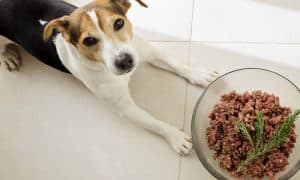

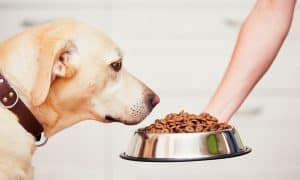


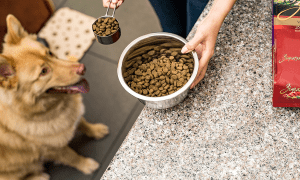



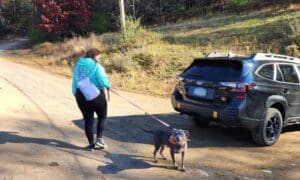





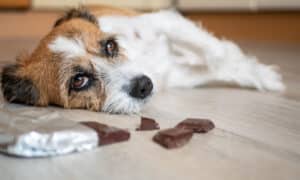


The biggest opponents of feeding a balanced, raw meat diet are bad veterinarians practicing only allopathic veterinary along with the AVMA, AAHA, AAFP and NASPHV… that’s because healthy animals are absolutely no good for their business.
Roger Biduk
These are great tips for handling raw food. I’ve been feeding my dog, Jake raw food for a while now and I’m very happy with the results. I found a bunch of great recipes at secretsofdogfood.net if anyone is interested in variety for their pooch.
Check out Genesis Raw and Nature’s Kitchen at yum4dogs.com!
The Maverick Difference
– ALL NATURAL
– 80-85% Fresh Meat in Every Recipe
– Complete Balanced Nutrition
– Only USDA Grade – A Meats
– All Human-Grade Ingredients
– 5 Cold-pressed Oils for Omega-3’s
– Minimal Processing
– FROZEN FOR FRESHNESS
– NO Wheat – NO Corn – NO Soy
– NO Hormones – NO Steroids
– NO Preservative – NO Antibiotics
– Regionally Sourced
– Proudly Made in the USA
I have been feeding my two labs the raw meat diet for a few months now but not sure if they are getting enough. Are there any suggestions on how much for 70 and 80 lb dogs? Thanks.
May Parker
says:I need help with the dog food issue…I am using Beniful dog food and had to put a pit bull down cause of large knot all over her body..kept growing more and more..never had a issue like this…I am in a area where i don’t have a lot of choices,,boonies for sure..’
Help me!
Mary Ann
says:Beneful is one of the worst dog foods out there.Try Go Chicken Refresh if you must use kibble. Or just go to Dogfoodadvisor.com and do your own homework.
kari
says:Would you consider this to be cheaper? I have been considering going to a raw diet, but im affraid of the cost? any suggestions?
I have lost over 60lbs on the HCG Diet and have kept it off for the better part of a year! It works but you have to floolw it to exactly as instructed in the original diet. – No do not start while on your period. Wait till the day after and then start. The hormonal balance during your period is all out of whack and starting the HCG Diet during this time is not harmful but is not effective. It will essentially be a waste to try and start till after your period ends. – Remember, 1lb of fat is the equivalent of 3500 Calories! So as you body enters into Ketosis (the process of burning fat for fuel) you body will be able to burn as much as 4000 calories per day of your own body’s fat reserves to make up for the small amount of calories your eating! Furthermore, HCG has been shown to be a natural appetite suppressant. – Weight loss varies according to many factors including wage, gender, physical condition, and individual body makeup. You can expect an average weight lose between .5 1.5lbs per day. However, the Ketosis process works on a 2-3 days cycle. That is as your body burns fat for energy it doesn’t burn the now empty fat cell or the surrounding tissue all at the same time. Instead it will fill the empty cell with water till it gets around to burning up the cell over the 2-3 days. So, you may find that you go a day or so with little or no weight loss and then wake up one morning and lose 1-3lbs from the day before! This is because your body final passed the water it was using as a placeholder! This is why you need to drink TONS of water or green tea while on the diet. It will make sure you body is super hydrated and it will flush out some of the Ketones produced by burning fat for energy through Ketosis. By flushing out the Ketones your body will be forced to burn more fat to make more Ketones for energy! Thus, as I like to say the More you Pee, the More You’ll Lose – During the HCG Diet your body will be searching for fat to burn for energy! You want it to burn the fat reserves in your body, right? So we want to limit the amount of fat it finds to only the fat reserves we want to burn and we do that by eating no fat or oils and not using any oils, lotions, or fats on our skin since some of that will be absorbed into the body. HOWEVER, you can use oil free makeup and mineral makeup without an issue. I hope this helps! Check out my sources for more info. Also feel free to contact me if you have any other questions.
Jeri
says:Not necessarily more expensive than quality kibble — but if you watch for sales-if there is a meat processor (locker) nearby (I get hearts for 20 cents a pound) – advertise on internet or (old fashioned cork) bulletin boards for people cleaning out their freezer–it’s pretty affordable. Then, there are fewer vet bills……..
Bobbi
says:I have been feeding my JRT & cat raw for 2 years now. I have seen the complete elimination of food allergies, stomach upsets caused by canned and dry kibble and no tartar on their teeth. I prepare the food in mass quantity and portion into 6oz. containers for immediate freezing. I then have a stock of food for 3 months at a time and have only taken 2 hours out of my Saturday once every 3 months to prepare. The containers are cheap and can be gotten from the $ store and are in packs of 5 or 6 so they can be tossed and replaced on a regular basis to minimize contamination, use glass or aluminum bowls for feeding and wash in dish soap with a little bleach to sanitize. The furry kids are happy and I am happy knowing I am doing the best possible for them.
would anyone be willing to share/tell me what to feed on a raw diet. my cocker weighs 30lbs and I am convinced ot would be in her best interestt to go raw.
Jeri
says:go to pets.groups.yahoo.com/group/rawfeeding for all the information and support you need!
Lou Ann McClure
says:I have 7 dogs ranging from 7lbs. to 25lbs. I have changed them over to the raw meaty bone diet about a month1/2 ago. they are loving it & I have seen improvements already in gums, teeth, skin & coats. I have 2 mini poodles the Vet wanted me to get their teeth clean but I don’t like the fact of them having to under go anesthia for it. Changing the diet their gums are no longer inflammed & their teeth are pearly white. I measure & weigh their morning meal & give them their meaty bone in the evening. Takes time but they are so worth it.
Lou Ann McClure
says:I did my homework before changing my dogs to the raw diet. I bought books written by Vets. & other people concerned about their dogs health. I have been online many nights reading comments one after another. Dogs have a different digestive system than humans & you do have to be very careful in the work area. My first few mornings I wondered because I made a mess but now I have it down to a science so have little to no mess. I clean the sink, countertops, knives etc. with a spray sanitizer. I wash their bowls everyday in the dishwasher after they eat. I buy in bulk & my refrigerator I use for their meat it seems to take forever for it to thaw. Each to their own but for now mine are staying on the raw diet & the uncooked bones. I stay right their with them the whole time they are eating.
Julie.Tucker.Goldman
says:Okay hear what your saying but let think about the first fact, It does not take long for the Salmonella or E.Coli. to work your forgetting that yes the food has to work its way through the digestive tracts but its still in there long enough to start the working and it only takes 1 little itty bitty bacteria to make the leap and you have a very sick dog and a very high cost vet bill,
Now if you want to give them a little hamburger every once in a while fine but in bulk is 1 fating and 2 not good for the heart with the extra weight or the hips..I will stick to the bag and the knowledge that the changes are VERY SLIM I will have this problem, but hey if you like it go for it
Sami
says:One little itty bitty bacteria? You mean…one ADDITIONAL to the BILLIONS of E. coli and Salmonella bacterium that ALREADY reside in your pet’s gut?
The pH level of a dog and a cat’s GI tract starts neutralizing bacteria on contact. If you’re as familiar with pH levels as you are with bacteria in general then you might want to do some more research. Dog and cat tummy’s contain digestive juices that are contain hydrochloric acid. Did you know that you can take hydrochloric acid, drop in a soda can and it will be completely dissolved within a few minutes? No? I guess that “one little itty bitty bacteria” could probably make it through, though.
I cannot help but laugh at the fact that you agree that a little hamburger is okay (because one little itty bitty bacteria could never reside in a small amount of hamburger, even if given occasionally.) Moreover, it’s pretty clear you’re not aware that many meats are low fat and LOWER fat than the kibble foods on the market. More importantly, not good for the heart? HAVE YOU ANY CLUE HOW MUCH SODIUM IS IN YOUR PET’S FOOD?
Very slim risk in “bagged food”, indeed. That’s why they publish recalls every day. Good luck with that.
Jeri
says:Couldn’t have replied better. 🙂 My 11 year old collie was itchy for 4 years–the vet & I tried everything except steroids (I wouldn’t have it) – made the switch to raw & she is no longer itchy, stinky, too thin, her teeth look great & her fatty tumors melted away! Yes, it’s a hassle, but well worth it. For anyone interested needing info, there are several raw feeding chats at Yahoo. Lots of support for making the switch there – tons of info.
Metejt
says:I won’t argue with you in regard to feeding raw, since I’m still not sold on it myself. But no matter what, it can’t be any worse than feeding dry food from a BAG! If you don’t want a high cost vet bill, I suggest you find a better quality food. Dry food is THE worst food you can feed and you’re slowing killing your animal with that food. The basis for the rest of your arguments is non-existent.
JJ
says:I used to feed my dogs kibble, and my vet bills were HUGE! As soon as I switched them to raw (over a year ago), my vet bills have dropped significantly, my dog who could not lose weight even on the tiniest amount of kibble has LOST weight on raw all the while being able to eat more food, and my dogs just look and feel great! Their bloodwork is great and even the vet comments on how wonderful they look. I will never turn back. My dogs have also never contracted salmonella or E. coli – and one of them eats 2 POUNDS of raw meat a day.
Perhaps you should do some research into how kibble is made. It’s revolting, and if you think that that is better for your dog than a natural raw diet, you are delusional. Also, take a look at how many kibbles are recalled for salmonella (yes, it’s in your kibble too) each year….